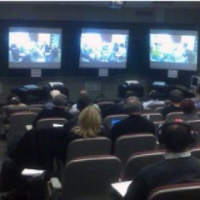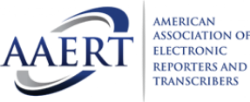The Role of Legal Videography in Preserving Legal Evidence
The Role of Legal Videography in Preserving Legal Evidence
Blog Article
Why Lawful Videography Is Vital for Accurate Court Recordings
The function of legal videography in courtroom setups can not be overemphasized, as it functions as a vital device for maintaining the stability of court records. By recording both verbal and non-verbal communication, it boosts the clearness of witness testimonies and reflects the subtleties of court interactions. This thorough paperwork not only help in decreasing possible misconceptions but additionally supports appellate testimonials, consequently reinforcing the judicial process. The ramifications of integrating legal videography right into basic court room practices elevate important concerns concerning its broader influence on the lawful system. What might these ramifications require?
Importance of Visual Evidence
In the world of lawful proceedings, the importance of aesthetic proof can not be overstated. Visual proof functions as a powerful device in developing facts, proving testaments, and boosting the general clarity of a case. This type of evidence, that includes pictures, video clips, and diagrams, can supply a substantial context that verbal descriptions typically do not have, thus offering courts and courts a clearer understanding of the scenarios surrounding an instance.
In addition, visual evidence help in the retention of info. Human cognition is naturally aesthetic, and people are more likely to keep in mind and understand information presented in a visual layout. In the courtroom, this can be important, as engaging aesthetic evidence can persuade point of views and enhance the narrative presented by legal reps.
Additionally, the use of visual evidence can reduce misconceptions and obscurities that usually emerge from spoken exchanges. By providing a direct representation of events, visual evidence assists to get rid of subjective interpretations and cultivates a much more objective examination of the realities. Consequently, the assimilation of visual evidence right into lawful procedures not just reinforces the stability of the judicial procedure however also boosts the likelihood of attaining a just outcome.
Capturing Non-Verbal Hints
Utilizing sophisticated videography strategies can dramatically enhance the capture of non-verbal hints during legal process. Non-verbal communication, consisting of faces, body language, and eye call, plays a critical role in communicating emotions and objectives that might not be explicitly specified in spoken testimony. legal videography. Legal videography uses high-definition cams and critical angles to guarantee that these refined signs are tape-recorded with clearness and accuracy
The ability to examine non-verbal actions can provide important context to declarations made throughout court sessions. For example, a witness's unwillingness or self-confidence can be analyzed through their pose or motions, possibly affecting the jury's perception of reputation. Moreover, making use of close-up shots can help focus on a speaker's expressions, enabling a much more nuanced understanding of the testament.
Moreover, incorporating multiple video camera angles can produce a detailed sight of communications, highlighting dynamics between parties involved. This multifaceted approach not only boosts the precision of the court document yet additionally help in maintaining the honesty of the judicial procedure - legal videography. Inevitably, recording non-verbal signs via lawful videography cultivates a richer, extra full depiction of court room procedures

Enhancing Testament Dependability
The dependability of testimony can be substantially reinforced with making use of top quality lawful videography. Video recordings act as an objective tool that catches not just the talked words of witnesses yet additionally the subtleties of their shipment, including tone, pacing, and psychological expressiveness. This complex paperwork provides a clearer understanding of the witness's credibility and intents, which can be pivotal in lawful proceedings.
Additionally, lawful videography reduces the possibility for misconceptions that might occur from created transcripts alone. When jurors can observe a witness's temperament and body language along with their statement, they are much better equipped to examine the credibility and integrity of the proof provided. This aesthetic context can strengthen the testimonial narrative, making it more engaging and reliable.
Furthermore, the existence of a video recording can discourage possible variances in testament. Witnesses might be extra mindful in their declarations when they understand they are being recorded, bring about even more precise and genuine accounts. Overall, high-grade legal videography enhances the integrity of statement, making sure that the court has accessibility to a total and sincere depiction of the truths as communicated by the witnesses.
Sustaining Appeals and Reviews
Lawful videography plays a vital duty in sustaining charms and evaluations by supplying a detailed visual record of courtroom proceedings. This visual documents records not just the spoken words of witnesses and attorneys but also the subtleties of body movement, intonation, and court dynamics. Such elements can be pivotal in understanding the context of testaments and arguments offered.
In the appellate procedure, where the focus is on mistakes of regulation and step-by-step fairness, a video record can work as a crucial device see here now for appellate courts. It allows judges to evaluate the original trial context, ensuring that choices are based upon a total understanding of the procedures. The capacity to aesthetically analyze the disposition of witnesses or the communications in between events can disclose understandings that created records might overlook.

Additionally, legal videography can aid in clarifying obscurities in statements or procedural judgments, consequently reinforcing the basis for a charm. By offering a dependable, objective account of what taken place in court, legal videography not just supports the integrity of the lawful process but additionally encourages all parties entailed to make enlightened decisions concerning their situations.
Improving Court Room Processes
Enhancing court room efficiency, lawful videography improves procedures by offering prompt access to visual documents of process. This modern technology allows judges, attorneys, and juries to review essential testament and evidence, guaranteeing that all celebrations have a clear understanding of the situation. By recording the subtleties of verbal and non-verbal communication, videography enhances the record, making it much easier to realize the context and weight of testimonies.

Furthermore, video clip recordings can assist in remote participation in hearings, allowing for higher flexibility in organizing and participation, which is specifically important in complex situations involving several stakeholders.
Conclusion
Finally, legal videography plays an essential function in making certain precise court recordings by giving necessary visual proof additional reading that records both verbal and non-verbal interaction. This method boosts the reliability of testaments, supports appellate evaluations, and streamlines court procedures. By fostering a thorough understanding of court characteristics, legal videography ultimately adds to more equitable judicial end results, reinforcing the stability of the lawful system and helping with educated decision-making.
Report this page